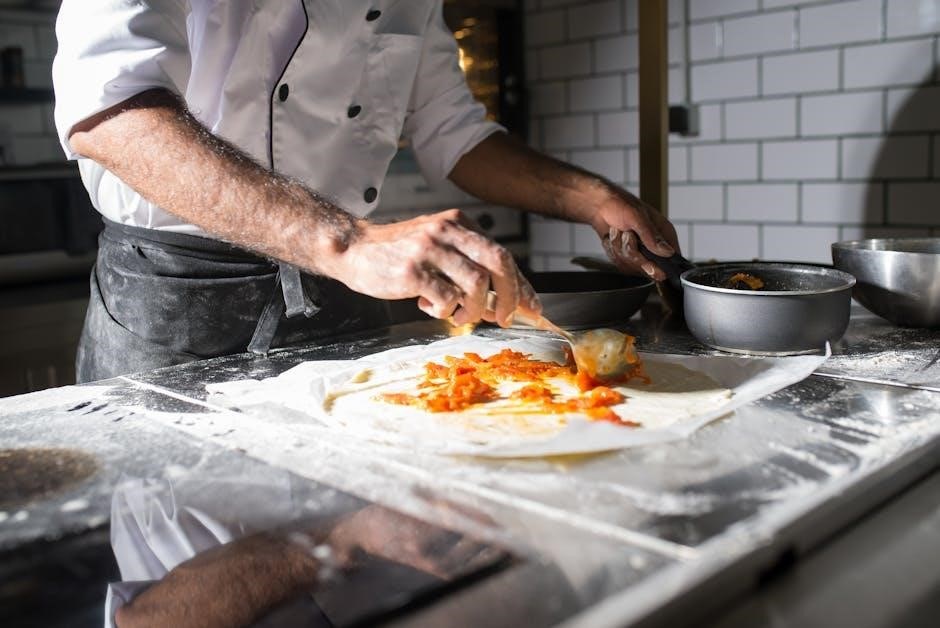Cauliflower pizza has surged in popularity as a healthier, gluten-free alternative to traditional pizza. Its innovative crust, made from riced cauliflower, offers a low-carb, keto-friendly option;
What is Cauliflower Pizza?
Cauliflower pizza is a innovative, healthier alternative to traditional pizza, featuring a crust made from riced cauliflower. The cauliflower is cooked, drained, and mixed with ingredients like eggs and cheese to create a low-carb, keto-friendly base. This crust is then baked until crispy and topped with sauces, cheeses, and various toppings, similar to conventional pizza. Its popularity stems from its gluten-free nature and reduced carbohydrate content, making it an appealing option for those with dietary restrictions or preferences. The result is a delicious, customizable dish that combines the comfort of pizza with the nutritional benefits of vegetables.
Popularity and Benefits of Cauliflower Pizza
Cauliflower pizza has gained immense popularity due to its health benefits and versatility. It serves as a low-carb, keto-friendly alternative, ideal for those avoiding gluten or monitoring carbohydrate intake. The crust, made from cauliflower, naturally reduces calorie content while offering essential vitamins and minerals. Its gluten-free nature makes it suitable for individuals with dietary restrictions. Additionally, the recipe’s adaptability allows for various toppings, catering to diverse tastes and preferences. This innovative dish not only aligns with current health trends but also provides a satisfying and delicious meal option for pizza lovers seeking a lighter version of their favorite food. Its rising popularity is a testament to its appeal and benefits.
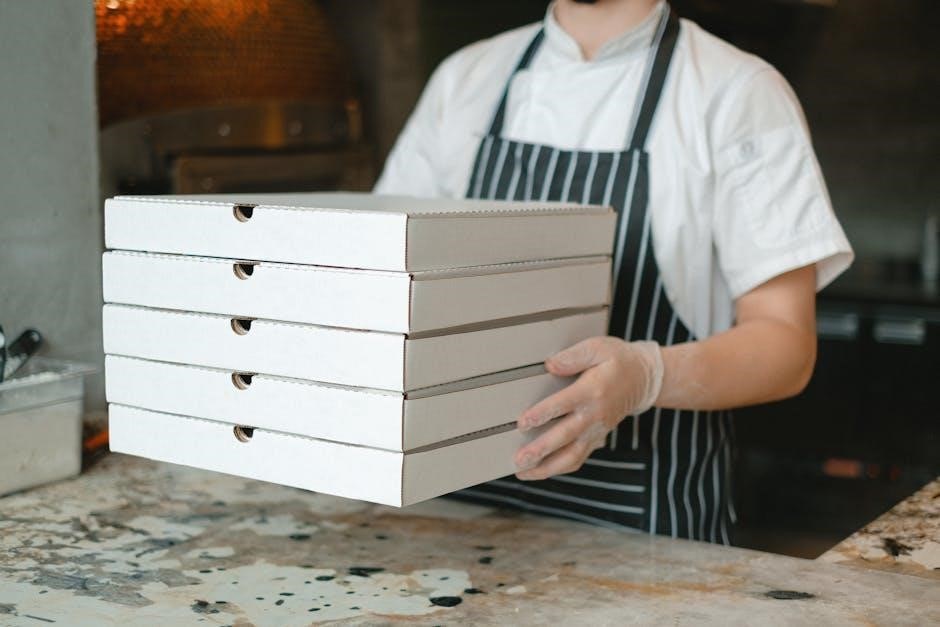
Ingredients and Tools Needed
To make cauliflower pizza, you’ll need fresh cauliflower, eggs, cheese, and seasonings. Essential tools include a food processor, baking sheet, and oven for baking the crust.
Essential Ingredients for Cauliflower Crust
The base of a cauliflower crust requires fresh cauliflower florets, which are pulsed into a rice-like texture. Eggs and shredded cheese, such as mozzarella or Parmesan, bind the mixture together. Adding seasonings like oregano, garlic powder, and salt enhances the flavor. Some recipes include almond flour or coconut flour to improve texture and crispiness. Optional ingredients like garlic or herbs can be added for extra flavor. Ensuring all ingredients are well-combined is crucial for a cohesive and sturdy crust. These simple components create a gluten-free, low-carb alternative to traditional pizza crusts.
Toppings for Cauliflower Pizza
Toppings for cauliflower pizza can be as versatile as traditional pizza, offering endless possibilities. A light layer of marinara or tomato sauce is a classic base, followed by shredded mozzarella or other cheeses for creaminess. Popular toppings include pepperoni, sausage, bacon, or ham for meat lovers, while vegetables like mushrooms, onions, bell peppers, and olives add fresh flavor. For a vegetarian option, roasted garlic, spinach, or artichokes can elevate the dish. Fresh herbs like basil or oregano provide a bright finish. Keep toppings balanced to avoid overwhelming the delicate cauliflower crust. This ensures a harmonious blend of flavors and textures in every bite.
Special Tools for Baking Cauliflower Pizza
To achieve the best results when baking cauliflower pizza, certain tools are essential. A food processor or grater is necessary for transforming cauliflower into a rice-like texture. A large baking sheet or pizza pan, preferably lined with parchment paper, helps prevent the crust from sticking. A clean kitchen towel is crucial for draining excess moisture from the cooked cauliflower, ensuring a crispy crust. Oven mitts are handy for safely handling the hot baking sheet. Additionally, a wire rack can be used to cool the crust before adding toppings. While not mandatory, a pizza peel or cutter can add convenience to the process. These tools collectively simplify the preparation and baking of a delicious cauliflower pizza.

Preparing the Cauliflower Crust
Preparing the cauliflower crust involves ricing the cauliflower, cooking it, and draining excess moisture to create a dry, pliable base for your pizza. This step ensures a crispy, low-carb crust.
How to Rice the Cauliflower
To rice cauliflower, start by washing and trimming the head, removing the leaves and stem. Cut it into florets and pulse in a food processor until it resembles rice. Be careful not to over-process, as this can make the texture too fine. Alternatively, use a box grater to shred the cauliflower into small, rice-like pieces. This step is crucial for creating a crust that holds together well. Properly riced cauliflower ensures even cooking and a crust with the right consistency. Once riced, it’s ready for cooking and mixing with other ingredients to form the crust dough.
Cooking the Cauliflower
After ricing the cauliflower, it’s essential to cook it to remove excess moisture and soften the texture. Place the riced cauliflower in a large saucepan with salted water and boil for 5 minutes, or microwave for 4-5 minutes until tender but not mushy. Avoid overcooking, as it can make the crust soggy. Once cooked, drain thoroughly using a fine-mesh strainer or cheesecloth to press out as much liquid as possible. This step is crucial for achieving a crispy crust. Let it cool slightly before mixing with other ingredients to ensure even distribution of flavors and textures. Properly cooked and drained cauliflower forms the foundation of a successful pizza crust.
Draining Excess Moisture
Once cooked, the cauliflower must be drained thoroughly to eliminate excess moisture, which is crucial for a crispy crust. Transfer the cooked cauliflower to a clean dish towel or cheesecloth. Wrap it tightly and squeeze as much liquid as possible, using firm pressure. Alternatively, use a fine-mesh strainer to press out moisture with a spatula. This step ensures the crust isn’t soggy and helps bind the ingredients together. Allow the cauliflower to cool slightly before mixing with eggs and cheese. Proper drainage is key to achieving the right texture and preventing a dense or soggy crust. This simple yet essential process is vital for the success of your cauliflower pizza.
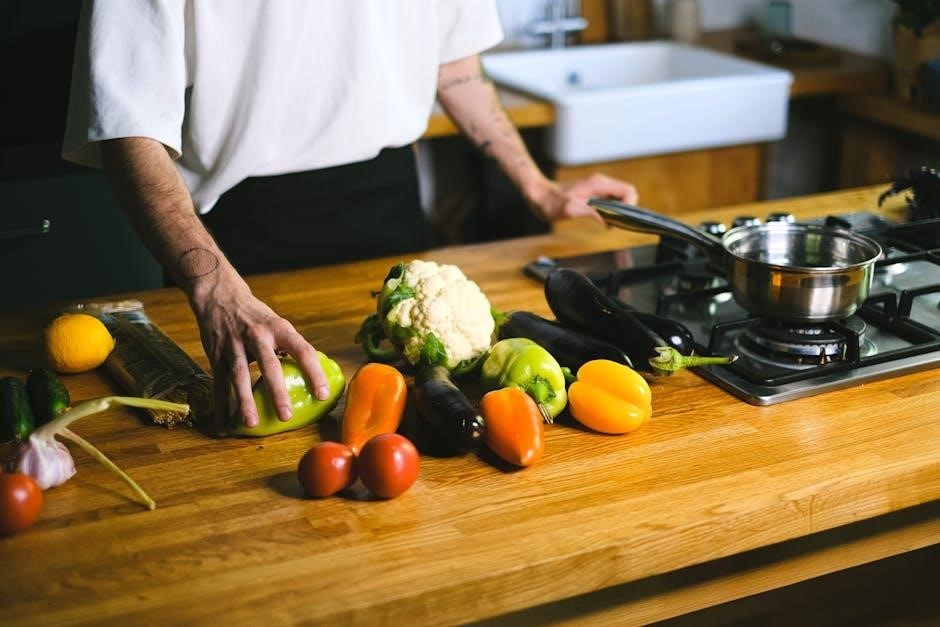
Mixing the Crust Dough
Combine cooked, drained cauliflower with eggs, cheese, and seasonings. Mix until a dough forms, ensuring all ingredients are well incorporated for a cohesive crust texture.
Combining Ingredients for the Crust
To create the crust, start by mixing 1 1/2 cups of riced cauliflower with 1/2 cup of grated Parmesan cheese. Add one large egg, 1/2 teaspoon of salt, and 1/4 teaspoon of black pepper. Stir until all ingredients are fully incorporated. For extra flavor, you can include 1/2 teaspoon of garlic powder or oregano. Ensure the mixture is smooth and holds together when pressed. Properly combining these ingredients is crucial for a cohesive and sturdy crust. Avoid overmixing, as it can make the dough too dense. This step sets the foundation for a delicious and durable cauliflower pizza crust.
Adding Flavor to the Crust
Enhance your cauliflower crust with aromatic spices and herbs for a delicious twist. Common additions include garlic powder, oregano, or smoked paprika. For an Italian flair, mix in dried basil or thyme. A pinch of red pepper flakes can add a subtle kick for those who enjoy a bit of heat. Experiment with different combinations to suit your taste preferences. Optionally, a sprinkle of nutritional yeast can mimic a cheesy flavor. These additions not only elevate the crust’s taste but also complement the toppings. Remember, the key is to balance flavors without overpowering the natural taste of the cauliflower. This step allows you to personalize your pizza and make it truly unique.

Baking the Crust
Preheat your oven to 425°F (220°C). Place the shaped crust on a baking sheet or pizza stone. Bake for 15-20 minutes, until golden and set.
Preheating the Oven
Preheating your oven is a crucial step when making cauliflower pizza. Set your oven to 425°F (220°C) and ensure it reaches full heat for at least 10-15 minutes. This ensures even cooking and crispiness. For a crisper crust, place a pizza stone or steel in the oven while preheating. If using a convection oven, reduce the temperature by 25°F (15°C) for better air circulation. Proper preheating helps the cauliflower crust bake evenly and prevents sogginess. Avoid opening the oven door too soon, as this can disrupt the temperature. A well-preheated oven is key to achieving the perfect crust texture.
Shaping the Crust
Shaping the cauliflower crust requires gentle handling to avoid tearing. Once the dough is prepared, transfer it to a piece of parchment paper or a lightly floured pizza peel. Use your hands or a spatula to spread the dough into a circular or rectangular shape, about 1/4 inch thick. Ensure the edges are evenly formed to prevent burning. For a crisper crust, press the dough outward from the center, creating a slightly thicker border. If the dough sticks, lightly dust it with additional cheese or spices. Avoid overworking the dough, as it can become dense. Once shaped, the crust is ready to bake or top with your favorite ingredients for the final step.
Baking the Crust Before Adding Toppings
Pre-baking the cauliflower crust is essential for achieving crispiness and preventing sogginess. Place the shaped crust on a preheated baking sheet or pizza stone. Bake in a preheated oven at 425°F (220°C) for 12-15 minutes, or until the edges are golden brown and the center is set. Avoid underbaking, as this can lead to a soft crust. If using a pizza steel or stone, ensure it’s preheated for optimal results. Some recipes suggest broiling for the last 2-3 minutes to enhance crispiness. After baking, remove the crust from the oven and allow it to cool slightly before adding toppings. This step ensures the crust holds up well when toppings are added and baked again. Proper pre-baking is key to a successful cauliflower pizza.

Adding Toppings
Once the crust is pre-baked, spread a thin layer of sauce evenly, leaving a small border around the edges. Layer cheese and desired toppings, ensuring balanced flavors.
Spreading the Sauce
Spreading the sauce evenly is crucial for flavor distribution. Use a spoon or brush to apply a thin, uniform layer of marinara or your preferred sauce over the pre-baked crust. Avoid excessive sauce to prevent sogginess. Start from the center, spreading outward in circular motions, leaving a small border untouched for a crispy edge. Ensure the sauce doesn’t pool or overwhelm the crust. This step balances flavor and texture, preparing the base for toppings. Proper sauce spreading ensures every bite has a tangy, savory note without compromising the crust’s integrity. It’s a simple yet vital step in crafting a delicious cauliflower pizza.
Layering Cheese and Toppings
After spreading the sauce, evenly layer shredded cheese, such as mozzarella or a blend, over the crust. This helps bind toppings and enhances flavor. Add your preferred toppings—fresh vegetables, meats, or herbs—in a balanced manner to avoid overwhelming the crust. For example, marinara sauce pairs well with mozzarella, pepperoni, and fresh basil. Sprinkle a final layer of cheese on top to ensure melting and even cooking. Avoid overloading the pizza, as this can make the crust soggy. Proper layering ensures each bite is flavorful and textured, with the crust remaining crisp. This step is key to achieving a delicious, well-balanced cauliflower pizza.
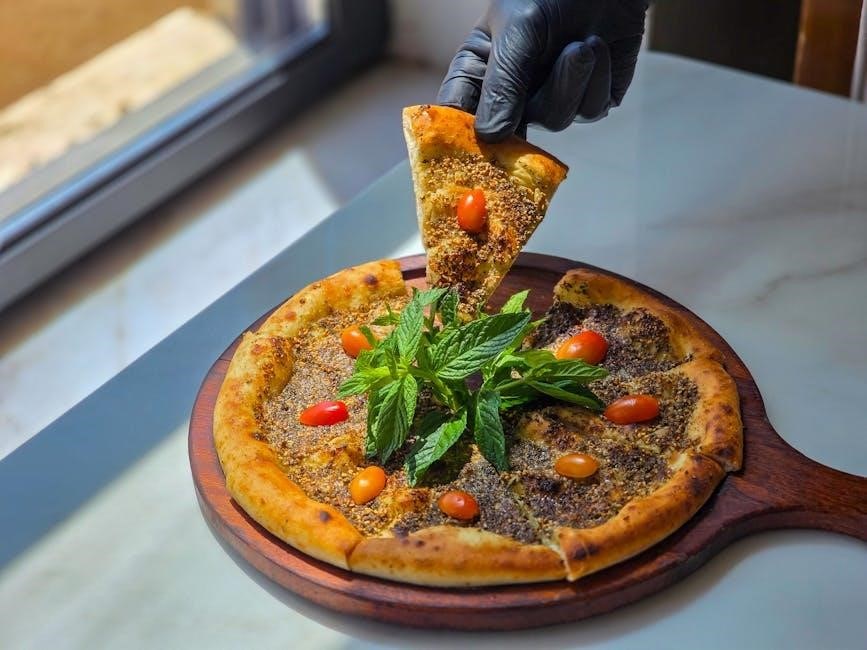
Baking the Complete Pizza
Preheat the oven to 425°F (220°C). Place the pizza on a baking sheet or pizza stone. Bake for 15-20 minutes until the crust is golden and toppings are cooked through. Ensure even cooking by rotating the pizza halfway. Avoid overheating to prevent burning the crust. Let it cool slightly before slicing. This final bake seals flavors and textures, creating a crispy crust and perfectly melted toppings. Proper baking ensures a delicious, well-cooked cauliflower pizza. Always monitor the pizza during baking to achieve the best results. Adjust time based on oven performance and topping quantity.
Final Baking Instructions
Once toppings are added, bake the pizza in a preheated oven at 425°F (220°C) for 15-20 minutes. The crust should be golden, and cheese melted and bubbly. Rotate the pizza halfway through baking for even cooking. Avoid overcrowding toppings to ensure the crust remains crisp. If using a pizza stone or steel, place it in the oven while preheating for better heat distribution. Keep an eye on the pizza during the last few minutes to prevent burning. Remove from the oven and let it cool for a few minutes before slicing. This step ensures the cheese sets and the crust stays firm. Proper baking guarantees a delicious, well-cooked cauliflower pizza. Adjust baking time based on oven performance and topping quantity. Ensure the crust is crispy and toppings are evenly cooked. Letting the pizza rest briefly before serving helps maintain its texture and flavor. Monitor the pizza closely during the final baking to achieve the perfect finish. This final baking step is crucial for bringing all the flavors and textures together. By following these instructions, you’ll achieve a perfectly baked cauliflower pizza. Always prioritize even cooking and crispiness to enhance the overall experience. The result will be a tasty, healthier alternative to traditional pizza. Enjoy your homemade cauliflower pizza with confidence in its quality and taste. Baking is the final step where all elements come together to create a satisfying meal. Take pride in your culinary creation as you serve it to family and friends. The effort put into each step pays off in the end with a delicious outcome. Savor the moment and the flavors of your homemade cauliflower pizza. Each bite reflects the care and attention to detail in the baking process. Celebrate your cooking skills with this delightful dish. The final baking instructions are designed to ensure your cauliflower pizza turns out perfectly every time. With practice, you’ll master the technique for a crispy crust and well-cooked toppings. Share your creation and enjoy the praise for your culinary expertise. The final bake is where your patience and effort culminate in a mouthwatering meal. Embrace the joy of cooking and the satisfaction of a successful dish. Your cauliflower pizza is now ready to impress and delight. Make every bite count with a perfectly baked crust and flavorful toppings. The final baking step is where your hard work pays off, resulting in a pizza that’s both nutritious and delicious. Take pride in your creation and enjoy the fruits of your labor. This step is where all your efforts come together to create a memorable dining experience. The final bake is the last touch in crafting a pizza that’s not only healthy but also incredibly tasty. Revel in the success of your culinary venture and the pleasure it brings to those who taste it. The end result is a testament to your dedication to creating a superior cauliflower pizza. Each step, including this final bake, contributes to a truly exceptional dish. The process may seem lengthy, but the outcome is well worth the time and effort. Your homemade cauliflower pizza is a masterpiece of flavor and texture, ready to be enjoyed. The final baking instructions ensure that every aspect of the pizza is perfectly cooked, from the crust to the toppings. This step is where patience and precision come together to create a culinary delight. The end result is a pizza that’s not only delicious but also aligns with various dietary preferences. The final bake is the crowning glory of your cauliflower pizza, transforming it into a dish that’s both satisfying and nutritious. Embrace the joy of cooking and the pride of creating something truly special. The final baking instructions guide you to a perfectly cooked pizza that’s sure to impress. With these steps, you’ll achieve a crispy crust and well-cooked toppings, making your cauliflower pizza a true success. The final bake is where all the elements come together, and your patience is rewarded with a delicious meal. The result is a pizza that’s both healthy and flavorful, a testament to your culinary skills. The final baking step is crucial for achieving the perfect texture and flavor in your cauliflower pizza. By following these instructions, you’ll ensure that your pizza is cooked to perfection every time. The final bake is where your efforts culminate, resulting in a pizza that’s both nutritious and delightful. The result is a dish that’s not only tasty but also aligned with modern dietary trends. The final baking instructions are your key to unlocking a perfectly cooked cauliflower pizza. With these guidelines, you’ll achieve a crispy crust and evenly cooked toppings, making your pizza a true culinary success. The final bake is where your dedication to quality and flavor shines through, resulting in a dish that’s both satisfying and healthy. The end result is a pizza that’s sure to please even the most discerning palates, a true masterpiece of your kitchen. The final baking step is where all your hard work pays off, delivering a pizza that’s both delicious and nutritious. This step is where your attention to detail ensures a perfectly cooked crust and toppings. The final bake is where your cauliflower pizza transforms from a promising dish into a culinary triumph. The result is a meal that’s not only enjoyable but also aligns with your dietary preferences. The final baking instructions are your guide to creating a pizza that’s both crispy and flavorful, a true delight for the senses. With this step, you’ll achieve a pizza that’s sure to become a favorite, offering a healthier alternative to traditional options. The final bake is where your patience and skill come together, resulting in a dish that’s both nourishing and delicious. The end result is a pizza that’s not only a pleasure to eat but also a testament to your cooking prowess. The final baking instructions ensure that your cauliflower pizza is cooked to perfection, with a crispy crust and well-cooked toppings. This step is where your efforts are rewarded with a truly exceptional meal. The final bake is where your cauliflower pizza reaches its full potential, offering a taste experience that’s both satisfying and healthy. The result is a dish that’s sure to impress and delight, whether it’s for a family dinner or a social gathering. The final baking step is where your dedication to quality and flavor results in a pizza that’s both delicious and nutritious. The final baking instructions are your key to creating a pizza that’s not only crispy but also packed with flavor, making it a standout dish in any setting. The final bake is where your hard work and attention to detail pay off, delivering a pizza that’s both healthy and mouthwatering. The result is a culinary creation that’s sure to please even the most selective eaters, offering a perfect blend of taste and nutrition. The final baking instructions guide you to a perfectly cooked pizza, ensuring that every bite is a delight. This step is where your patience and skill result in a dish that’s both satisfying and healthy. The final bake is where your cauliflower pizza becomes a true masterpiece, offering a delicious and nutritious meal option. The end result is a pizza that’s not only a pleasure to eat but also a reflection of your culinary expertise. The final baking instructions are crucial for achieving a perfectly cooked pizza, with a crispy crust and well-cooked toppings. This step is where your efforts culminate in a dish that’s both tasty and nutritious. The final bake is where your cauliflower pizza reaches new heights, offering a flavor and texture that’s hard to resist. The result is a meal that’s sure to become a favorite, providing a healthier alternative to traditional pizza. The final baking instructions are your pathway to creating a pizza that’s both delicious and nutritious, a true gem in your culinary repertoire. With this step, you’ll achieve a pizza that’s not only crispy but also bursting with flavor, making it a standout dish for any occasion. The final bake is where your dedication to quality and flavor results in a pizza that’s both satisfying and healthy. The end result is a dish that’s sure to impress, offering a perfect blend of taste and nutrition. The final baking instructions are your guide to creating a pizza that’s not only delicious but also aligned with your dietary preferences. This step is where your patience and skill result in a truly exceptional meal. The final bake is where your cauliflower pizza becomes a culinary masterpiece, offering a taste experience that’s both enjoyable and nutritious. The result is a pizza that’s sure to please even the most discerning palates, a true testament to your cooking skills. The final baking instructions ensure that your cauliflower pizza is cooked to perfection, with a crispy crust and well-cooked toppings. This step is where your hard work and attention to detail pay off, delivering a dish that’s both healthy and flavorful. The final bake is where your cauliflower pizza reaches its full potential, offering a meal that’s both nourishing and delicious. The end result is a pizza that’s not only a pleasure to eat but also a reflection of your dedication to quality and taste. The final baking instructions are crucial for achieving a perfectly cooked pizza, ensuring that every aspect of the dish is executed flawlessly. This step is where your efforts culminate in a truly exceptional culinary creation. The final bake is where your cauliflower pizza becomes a true delight, offering a crispy crust and flavorful toppings. The result is a dish that’s sure to become a favorite, providing a healthier alternative to traditional pizza options. The final baking instructions guide you to a perfectly cooked pizza, where every bite is a testament to your culinary prowess. This step is where your patience and skill result in a meal that’s both satisfying and nutritious. The final bake is where your cauliflower pizza reaches new heights, offering a flavor and texture that’s hard to resist. The end result is a dish that’s not only delicious but also a reflection of your commitment to quality and health. The final baking instructions are your key to creating a pizza that’s both crispy and flavorful, a true gem in your culinary repertoire. With this step, you’ll achieve a pizza that’s not only a pleasure to eat but also a testament to your cooking expertise. The final bake is where your cauliflower pizza becomes a true masterpiece, offering a taste experience that’s both enjoyable and nutritious. The result is a meal that’s sure to impress, whether it’s for a family dinner or
Ensuring Crispiness and Even Cooking
To achieve a crispy crust and even cooking, preheat the oven to 425°F (220°C) with a pizza stone or steel inside for at least 30 minutes. Place the cauliflower pizza on parchment paper or a lightly floured pizza peel to prevent sticking. Bake for 15-20 minutes, rotating the pizza halfway through to ensure even browning. Avoid overcrowding with toppings, as this can trap moisture and soften the crust. For extra crispiness, broil for 1-2 minutes at the end, watching carefully to prevent burning. Let the pizza cool slightly before slicing to allow the cheese to set. These steps ensure a crispy, evenly cooked cauliflower pizza crust every time, enhancing both texture and flavor. Proper cooking techniques are key to achieving the desired result.
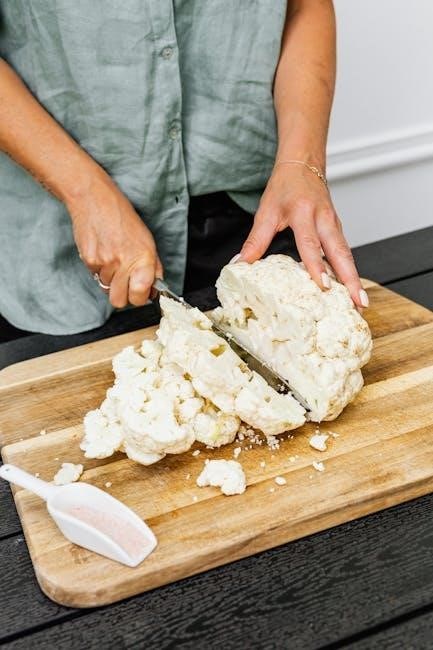
Tips and Variations
Experiment with flavors by adding herbs or spices to the crust. Use alternative cooking methods like grilling or air-frying for a crispy texture. Custom toppings can enhance the taste and make your cauliflower pizza truly unique.
Alternative Cooking Methods (Grill, Air Fryer)
For a crispy cauliflower crust, try grilling or air frying. Preheat the grill to medium heat and cook the crust for 5-7 minutes per side until golden. Air frying at 375°F (190°C) for 10-12 minutes yields a crunchy texture. Both methods enhance flavor and texture without oven use. Ensure the crust is pre-baked before adding toppings for best results. These alternatives offer versatility and can achieve a restaurant-quality finish at home. Experimenting with these methods allows you to tailor the cooking process to your preference, whether you prefer a smoky grilled taste or an air-fried crispiness. Always preheat properly and handle the crust gently to avoid breaking.
Customizing the Recipe
Customizing cauliflower pizza is easy and fun! Start by modifying the crust with different flours like almond or coconut for varied textures. Add spices such as garlic powder or Italian seasoning for extra flavor. For a vegan version, replace eggs with flaxseed or chia eggs. Toppings can be tailored to dietary preferences, such as using vegan cheese or plant-based meats. Experiment with sauces like pesto or hummus instead of traditional marinara. Herbs like basil or oregano can be sprinkled on top for freshness. This versatility makes cauliflower pizza adaptable to any taste or dietary need, ensuring everyone can enjoy a delicious and personalized meal.

Troubleshooting Common Issues
Common issues with cauliflower pizza include a soggy crust or dense texture. Proper draining of moisture and adequate baking time are essential for crispiness. Adjusting ingredients can help fix texture problems.
Preventing a Soggy Crust
To prevent a soggy crust, ensure thorough moisture removal from the cauliflower. After cooking, drain well using a kitchen towel to squeeze out excess water. Allow it to cool slightly to release more moisture. Use sufficient binding ingredients like eggs and cheese to create a sturdy dough. Preheat the oven to a high temperature and bake the crust on a pizza stone or steel to enhance crispiness. Spread the dough thinly and evenly, avoiding thick spots that retain moisture; Bake until golden and crispy, ensuring adequate cooking time without overbaking. Avoid excessive wet toppings and consider pre-cooking them to reduce moisture. Use a wire rack or parchment paper for better airflow during baking. Experiment with low-moisture cheese and add Parmesan for extra crispiness. Balancing these steps will help achieve a dry, crunchy crust.
Fixing a Too-Dense Crust
A dense cauliflower crust can result from overmixing the dough or using too much binding agent. To fix it, ensure not to over-process the ingredients. Use a light hand when mixing the cauliflower with eggs and cheese. Avoid overcooking the cauliflower, as this can make it too soft and dense. Pat the dough evenly onto the baking surface, ensuring it’s not too thick. If the crust becomes too heavy, try adding a little more cheese or egg to balance the texture. Baking on a preheated pizza stone or steel can also help achieve a lighter crust. Experiment with ratios of cauliflower to binding ingredients and cooking times to find the perfect balance.
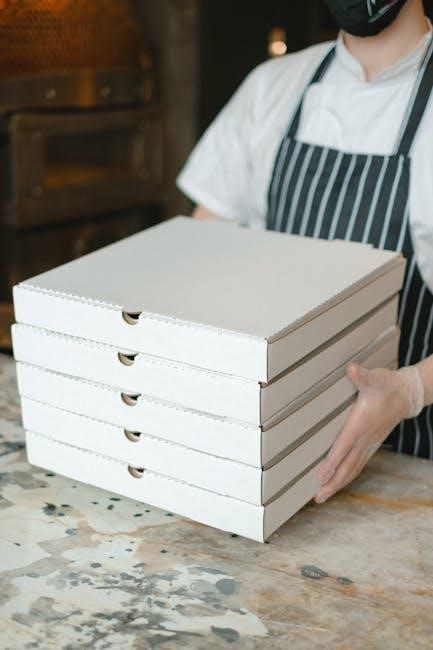
Nutritional Benefits
Cauliflower pizza is a low-carb, keto-friendly option, rich in vitamins and fiber. It reduces calorie intake while providing essential nutrients, making it a healthier alternative to traditional pizza.
Low-Carb and Keto-Friendly Options
Cauliflower pizza crust is a fantastic low-carb alternative, making it ideal for keto diets. By replacing traditional flour with riced cauliflower, the crust significantly reduces carbohydrate content. This option caters to those seeking to minimize their carb intake without sacrificing flavor. Additionally, the crust can be tailored to suit keto requirements by incorporating ingredients like almond flour or cheese, enhancing its suitability for low-carb lifestyles. The crust’s lower glycemic impact makes it a great choice for health-conscious individuals and those managing dietary restrictions. This innovation allows pizza lovers to enjoy their favorite dish while adhering to low-carb or keto dietary preferences.
